|
There’s nothing more exciting than seeing a well-executed through ball that splits the defense that is anticipated by your striker who runs on to it and blasts it into the net! In recent years, teams like Barcelona, Bayern Munich and Manchester City have all gained attention for their style of play. Barca in particular (and Spain at the international level) have relied on a style that utilizes taking advantage of passing channels to create scoring opportunities. In essence, they all use possession to penetrate. The idea is to utilize passing and player movement to create gaps between defenders for attacking players to run into and for the ball to be played through- the KILLER PASS. The killer pass is the pass that creates a goal-scoring opportunity. Players that can play these combinations in and around the box become the most effective players. PASSING LANES VS. CHANNELS Passing lanes used to be called “gaps between defenders”. It is a space available for a ball to be passed through, typically on the ground. The “gap” must be wide enough so that no defender can extend the leg to cut off the pass. Or the passing distance must be short enough and the pass hard enough such that defenders don’t have time to react. The purpose is to play a ball into space behind the defense for another attacker to run into- the KILLER PASS. If it’s inside the penalty box it will set up a great scoring opportunity. Anywhere else in the field it will open up space and keep forward progression moving. A channel is most commonly referred to as the space between the most outside defender and the side line. It used to be called playing the ball down the side or the wing. From a passing technical perspective the difference between passing between two defenders or one defender and the side line is that the side line acts as a passive defender. It restricts the space available, but unlike a person, it cannot move to intercept the ball. If the situation is as in the above diagram, and the space down the side is available, a pass should follow to set the runner free and generate the cross into the penalty box. A pass on the ground will be easier to control for the receiving player, but there must be enough space to play the ball through. A ball over the top wouldn’t necessarily be called a pass into the “channel. It is easy to see how channel and lane can be used interchangeably. What matters is the concept of having space for a pass between defenders, or space for a pass between the most outside defender and the side line. Key Attacking Points:
3 Comments
Watch professional level soccer long enough and you will notice certain aspects to the game that every team performs consistently- switching the point of attack, one or two touch play, possession to produce weaknesses, using the width of the field, etc. One key aspect that isn't always discussed however, is maintaining possession in your attacking half of the field and the tactical reasons why. Once a team has built the attack out of their defensive third (post 11/27) and across the half, there are some key components to maintaining possession of the ball and player positioning on the field. Much of this is determined by the formation that the team is playing, but overall, the concepts and tactics do not change much from one formation to the next. Key Concepts:
Goalkeeper- Circulate the ball short and to free players, and support the ball near-side as an option to circulate the ball
Center Backs- Split to approximately the width of the penalty box. Shift the opposition’s first pressing line by circulating the ball to one side and then quickly shifting to the other. The center backs must move forward of the halfway line to keep the ball in the attacking half. Full Backs (Outside Backs- Get high and wide, positioning level and outside of the opposition’s first pressing line. Defensive Center Midfielder- Be positioned centrally between the two center backs and in the same horizontal line as the full backs. Attacking Midfielders- Play between the opposition lines in the midfield spaces. Attract opponents and create space in behind by dropping in front of the midfield line. Outside Midfielders- Get and maintain width with a high line of attack. Drop back to support and cover any attacking runs by the fullbacks Forward- Play between the center backs and be active in movement. Drop into available spaces to receive the ball and support attacking midfield players. The goal in attack is to score. However, it is important that other tasks be performed before that can happen. Maintaining a high defensive line- INSIDE THE ATTACKING HALF- is among the most important tactical aspects. Switching the point of attack from one side of the pitch to the other also allows for creating gaps in the defense to exploit. Tactics may vary from coach to coach. The most important thing a player can do is to listen to the coaching directions and tactical responsibilities for ALL positions. This way, the players have a clear understanding of the overall plan and approach. One thing that coaches are often guilty of doing, is brushing over defending as a topic to cover during training sessions, particularly during high school seasons, when your time is limited due to the number of matches. In addition, some coaches, like me, play the game in a much more attacking way, which tends to focus on the time from gaining possession to scoring. Self-admittedly, this overlooks one key factor- to gain possession, you must first DEFEND. Defending is also a much less glamorous position to hold and a much less exciting component or skill to practice. Every player wants to get out on the field, beat guys 1v1 and score goals . . . ALL DAY! But a team that struggles to defend- individually or as a unit- will struggle to win games. Therefore, we must focus on defensive responsibilities of individual players and as a team regularly. Roles of the Individual Defender
Golden Rules of Individual Defending:
Key Principles of 1 v. 1 Defensive Pressure: Quick Pressure- The player nearest the ball must “close the space” as quickly as possible as soon as the ball is played to his opponent. You should close ground on your opponent as the ball is traveling to the attacker, do not wait until he/she has received the ball. Defender has three priorities:
Touch Tight Pressure (within touching distance/arms length)- When closing down space, it is important that you don’t overrun the play. As a rule you should slow down about 5 yards from the attacker and gradually take away the remaining space in a controlled defensive position.
Patient Pressure- Good defenders will recognize that they do not need to win the ball immediately. If you approach the attacker quickly and under control, taking away his space, you will shift the initiative to the attacker. Most attacking chances are created through poor and impatient defending. General rules for “Patient pressure” are:
Problem Areas for Defenders As you can see the role of the first defender is vital to the success of team defending. If we do a poor job in applying pressure to the ball and taking away the attackers options the whole defensive system will suffer. It is very important that we spend time teaching each player the principles of individual defending. The 1 vs. 1 is the foundation of the game. This doesn’t just apply to the attacking principle, but defensive as well. Throughout most matches, the transition from defense to offense- or offense to defense- will usually go through the midfield players who are tasked with supporting either the forwards or attacking midfield players or the defense. They must have vision to see where to pass, and the skill and speed to execute their tactics. Here is the biggest non-committal phrase in soccer: "It depends." Players often ask questions about what to do and invariably, my answer will include this phrase. So much of our decision making truly depends on the dynamics of the moment. So coaching this game, and especially transition, is tricky. A few key points for midfielders to be aware of when transitions from defense to offense:
Liverpool play an attacking style that Jurgen Klopp has famously called "Heavy Metal Football". This is a direct style of play that employs a few key components:
In a nutshell, the style requires intensity, creativity, quick thinking and quick strikes. Space- in soccer, it’s sometimes THE FINAL FRONTIER . . . . Learning the power of available spaces on the field can be powerful for any player or team. It can be a difficult concept for some players to learn, mostly because they are accustomed to playing sports where the idea is to pass a ball directly to a person, not behind them or well in front of them. But in soccer, it’s often the key to a dynamic and successful attack. The first trick in understanding space is knowing when and when not to play a ball there. Often times, our best option is to play a ball directly to a player- feet, head, etc. To make things even more difficult, players have to make these decisions in seconds. They need to be able to read attacking patterns on the field and often under pressure from a defender, especially during indoor where space is limited and pressure is tight. Liverpool FC (The greatest club in the world! . . . I'm required to say that), are perhaps one of the best teams to demonstrate the ways in which playing to space or feet can be productive in attack, and usually through combination play that results in scoring opportunities. Take a few minutes to watch this highlight compilation from LFC's 2018 campaign to see what great attacking runs and combinations look like: Playing the ball into space requires three very important things to take place:
Similarly, players can create space on the field by simply moving on the field. Similar to a check run, this is intended to drag a defender away from a space, thereby making the space available for another teammate to run onto the space and exploit it. Types of Runs:
The bottom line- players spend MOST of their time on the field WITHOUT THE BALL. Understanding their usefulness and the advantages they can create are extremely important for every player.
Strong legs. Fast reflexes. Pure speed. Soccer players boast some serious athletic attributes. Here’s how to get them. Forgetting for a moment the sheer distance covered in a match (about seven miles), what might be most impressive about soccer players are their razor-sharp moves. A pass fake to thread between defenders, stealing the ball from an opponent dribbling down the field, pulling a 180 to scissor-kick the ball mid-air—all require fast feet and reflexes. Also known as agility. So what is it, exactly? The basis of agility is acceleration. The ability to speed up, decelerate, change direction, reaccelerate. Much of our training at U14 builds in agility to our drills and scrimmages. But agility is different from endurance. Agility workouts require training at 95 to 100 percent of max effort, meaning you’re getting up to an all-out sprint during every run. To ensure that intensity, sessions have short active periods and long rests. Coaches also often build in sport-specific skills like swerves, cuts, and drop-steps, to mimic on-field action. Agility has obvious benefits on the pitch and doing agility work at a high intensity may have brain benefits, too. A University of Copenhagen study suggests that working at 90 percent of your max can improve motor memory consolidation—the brain’s ability to retain new motor skills. Due to our lack of time in training, players MUST maintain their physical fitness independently. Here are some exercises players can, and should do, in order to build and maintain speed, agility, strength and endurance: Strength Exercises Being a youth coach over the last 20 years has provided me with a whole host of experiences with players and parents. Predominantly, these experiences have been positive and even life-changing for me. However, I have also seen my share of difficult experiences between players and their parents, parents and officials, parents and parents, and parents and coaches. These negative experiences can have a lasting impact on anyone involved and it's important that we ALL work to keep athletic experiences positive for our sons and daughters. Below is advice for parents that I have shared over the years. Although it was initially written for basketball parents, many of the points apply to parenting in general. The following advice is borrowed from Coach Morgan Wooten. Coach Wootten is a legendary coach who led the DeMatha High School boys basketball program in Hyattsville, MD, from 1956-2002. He won 1,274 games and has a winning percentage of 86.9%
In soccer, you will often hear these two terms- finishing and shooting- interchangeably. But they have very distinct meanings that all players must understand. Having the ability to shoot, does not mean you can finish. Key Concepts:
I'm not trying to minimize the skill involved in finishing versus shooting. Both attempts on goal require players to utilize particular mechanics and techniques that players must practice regularly and independently. Through practice, players learn where and how to strike the ball to create the type of shot they want to produce. another difference includes how hard players strike the ball- shooting will often require power, whereas finishing often requires finesse. For my teams, shooting also serves a secondary purpose. Shooting from distance early in a match can force defenses to step forward and defend higher up the pitch. Therefore, I will often coach my teams to take shots from 20+ yards away from goal in order to force the defenders to worry about shots from distance. This creates space behind the defenders for attacking players to run into and create chances for finishing on goal. Finishing requires players to make decisions quickly in tight spaces and requires various techniques and surfaces of the foot or head- inside/outside/laces. Due to the limited time often afforded players in front of the ball, they must practice one-touch and two-touch shooting in this space. These are often scrappy goals that develop from mistakes and scrum-like conditions. The final key, in both shooting and finishing, is going to be repetition. The higher the number of reps a player takes, the more they will perfect their technique and mechanics. It isn't as easy to do during indoor, but I would often advise my players to either stay after training sessions or spend time independently working on shooting and finishing- this may include taking free kicks and corner kicks.
Types of Shots
Having a cohesive tactical approach to attacking play can have great benefits for any team. Successful teams have players who understand those roles and tactics on the entire field. However, being creative in the final third of the field is what produces goals . . . and hopefully success! First of all, let's define what we mean by the "final third". We often divide the field into thirds in soccer to denote the differing tactics that are used in those areas. The area closest to the team's goal is the defensive third. The middle of the field around the halfway line, and including the center circle, is the middle third. The part of the field nearest to the opponent's goal is what we refer to as the final third. It’s called the final third sometimes because that’s your team’s offensive objective: to build play and finish in your opponents defensive third with a goal. Key Concepts:
Attacking in the final third has two basic components- the build up of attack and finishing. For this post, I am going to focus primarily on building the attack. Building the Attack Coaches have varying thoughts and tactics when approaching the final third. In general, however, you will hear most of our coaches discuss any or all of the following:
In training, we will often run through multiple tactical scenarios to move the ball into the attacking third. Personally, I try to encourage creativity with limited risk- playing a simple pass, playing the way you are facing, playing into space, etc. All of this requires patience. Mistakes often happen when players are impatient and simply get rid of the ball in a direction they think someone should be, not where a teammate is on the field.
Since 2003, I have been a trainer and coach with Lake Placid Soccer Centre (LPSC) which runs player and team camps through St. Lawrence University. LPSC is partly owned by Co-Founder and International Director of Coerver Coaching, Alfred (Alf) Galustian. In 2010, I completed my Coerver Youth Diploma with Alf and continue to believe strongly in the Coerver mission and method. Here's a little information about Coerver Coaching and it's goals: Coerver Coaching is a global soccer coaching program inspired by the teachings of Wiel Coerver and created in 1984 by Alfred Galustian and Chelsea great, Charlie Cooke. Coerver Coaching is:
The ultimate goal of the Coerver Coaching Method is to:
We will be working with Coerver skill development during many of our technical training sessions. In particular, I will focus on an aspect of Coerver skill development called Mirror Moves. These are complimentary attacking moves that allow players to either beat a defender 1v1 or change-of-direction moves to divert play away from pressure. These are components of 1v1 Attack & Defense in the Player Development Pyramid above. |
Coach Shaver"Playing the Beautiful Game" Archives
February 2019
Categories |

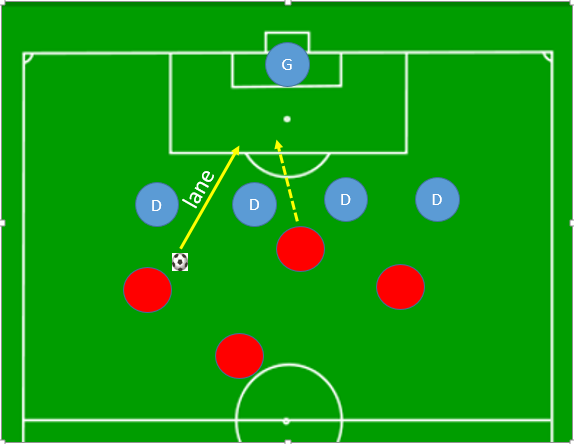
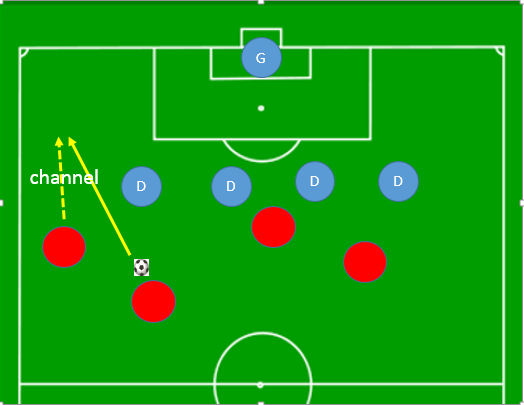
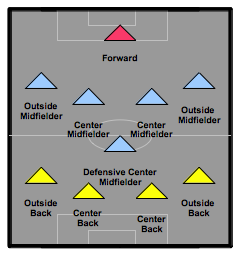
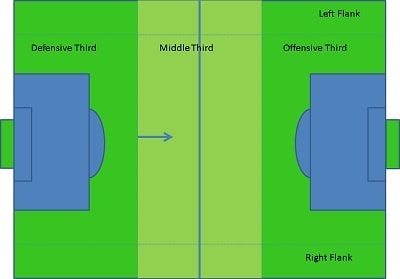
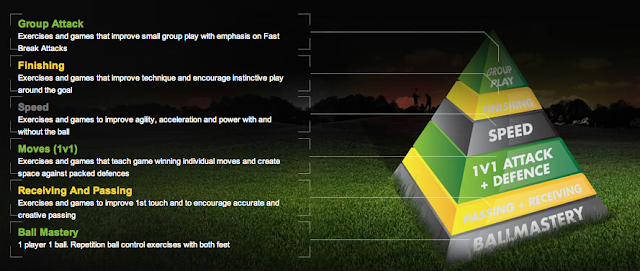
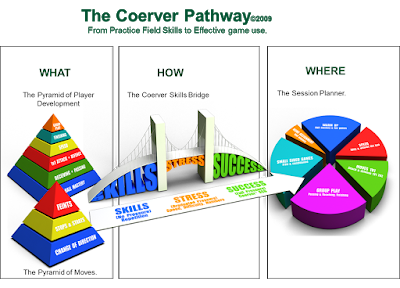
 RSS Feed
RSS Feed
